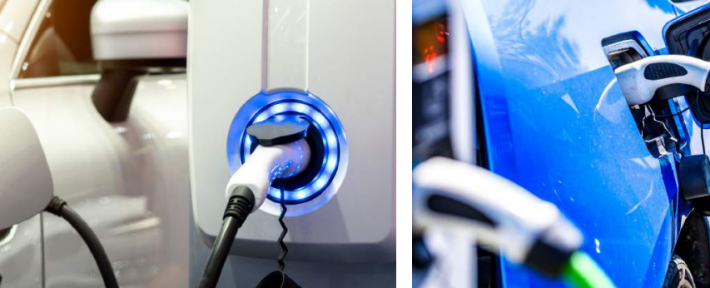As electric vehicles (EVs) become mainstream, single outlet charging stations continue to be installed, but in many ways they no longer meet the demands and requirements of EV drivers. ChargeNode is at the forefront of this development, building large scale EV charging systems that serve hundreds or even thousands of EV customers in places like office parks, airports, shopping malls and municipal parking garages.
To put it another way, when we’re talking about individual charging stations, it’s pretty much a first come, first served situation – and the person who comes late might not be able to charge at all. This is where large scale installations are a game changer. They are a more effective use of resources because ChargeNode can see when people are at work and how long they will be there and then optimise the charging. In order to do this and connect each car, ChargeNode needs information, such as how much the customer wants to charge their vehicle and how long the car will be parked. This allows them to allocate energy across the charging system in order to meet the customers’ needs.
“Because we work with really large facilities, we have to consider that hundreds of cars may need charging in the same location, because large scale charging requires a totally different way to charge cars,” explains Kristian Sandahl, the chief executive and founder of ChargeNode. “So, we ask our customers two very basic questions: how much would you like to charge and when are you going to use the car? Having this information means that instead of charging hundreds of outlets at a minimum power rate all at the same time, we charge an optimal number of cars in sequence of how they will be used. If the person changes their leaving time or something else happens, we can accommodate that by making adjustments within the system.”
It’s IoT and connectivity that allows ChargeNode to make those adjustments and optimise energy and charging for its customers. By being connected 24/7 the ChargeNode solution allows it to see who is, for example, coming to work at what time and who needs to leave at what time. ChargeNode gets its information through its connected app, which asks customers how much they want to charge and how long the car will be parked, allowing ChargeNode to optimally allocate the energy as needed. “
In terms of IoT, it’s very simple: we need to be online all the time to be able to have a dialogue with the car owner, not just the car,” says Sandahl. “The car is an asset to put energy into, but in order to do that I need to rely on the owner so he or she can be informed if something occurs, such as a fourth car comes in and needs energy. If that happens we can contact the owners who have cars already charging and say, for example ‘You asked for 20kWh, would you be fine with 15kWh? Or, if they have changed their time of departure and that would need to be fed into the system. If they’re leaving earlier or later than they initially planned, we need that information in order to make sure they are served and that the change works across the system. That means we need to be connected in order to stay informed all the time. You could say that other charging stations need to be online every hour or so to send data, while we need to be online 24/7 to operate efficiently and effectively. That’s why having reliable connectivity is so important. We chose Tele2 IoT after evaluating a number of vendors. Tele2 IoT was competitively priced and flexible in those discussions, and there was also the considering of the managed logistics with the SIM cards – basically it was a very smooth process for us.”
Reliable connectivity not only keeps ChargeNode in touch with its customers, it also allows them to gather data in order to see patterns and how much they change.
“Even if the data is not useful today, it will be useful in the future, because we can see patterns over time, such as how much of an impact energy prices will have if you have a half-full battery or an almost empty battery, along with what’s your comfort level in terms of how much of a charge you want before you worry about the price,” says Sandahl. “All that data tells us a lot about customer behaviour, such as if you have 10% charging left, you are more reliant on paying more so that you feel comfortable with the charging level.”
In terms of the future, Sandahl says that charging is all about convenience and people not worrying about how much charging ‘juice’ they’ve got in the tank. And as more and more people buy EVs who don’t live in individual homes where they can charge off their home energy supply, large charging station installations are going to become increasingly important.
“Right now, some apartment complexes are a bit reluctant and slow to implement charging stations,” says Sandahl. “But they are starting to realise that this is like having fibre internet in their buildings. Even if you don’t worry about charging your car, the residents of your building probably want the possibility to do so, and the person they eventually sell their apartment to will likely also want that possibility, so this is an area where a lot of things can happen.”
“EV sales are overtaking fossil fuel car sales, which means more and more charging stations will be needed going forward,” he adds. “People need to think beyond next week or next year and think more long-term in order to be prepared. Installing large scale charging solutions now means not having to retrofit or spend more money later on – and it also means using our limited resources more wisely.”
Comment on this article below or via Twitter: @IoTNow_










